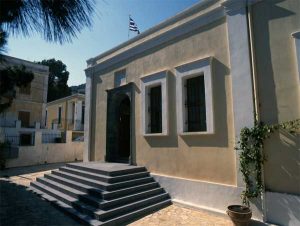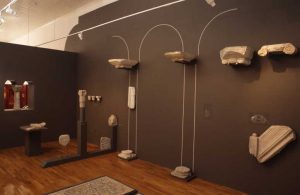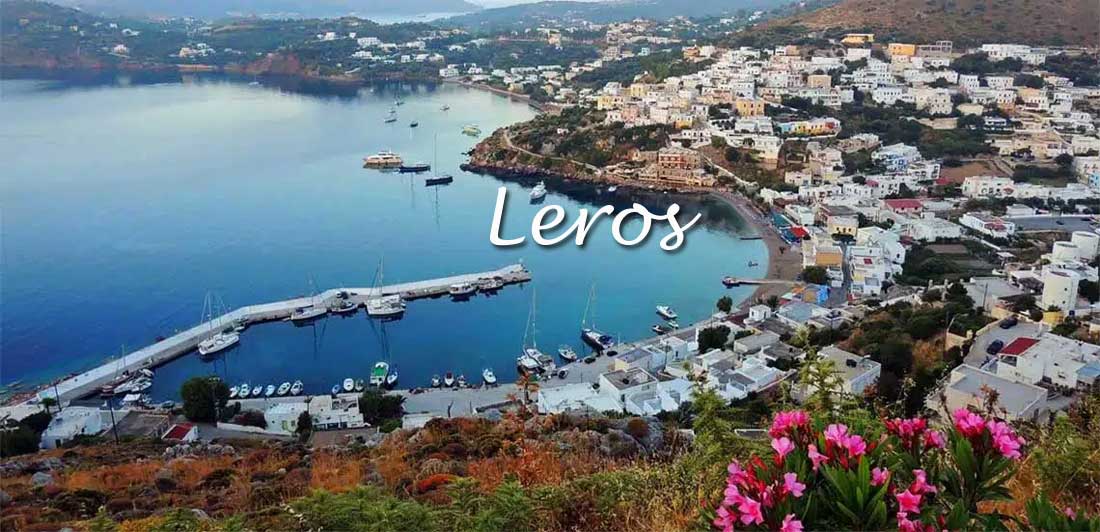The Archaelogical Museum of Leros

They host: stone tools, tools, mainly unpainted ceramics, pithos, vases and utensils of daily use, from the prehistoric settlement of Kontarida, the first known settlement of the final Neolithic period (3500 – 2800 BC) outside of caves.
Among the exhibits are the exquisitely crafted clay masks of Dionysus, a female bust possibly of Ariadne, and the figurine of a symposist (4th – 3rd century BC). Also important is the thematic section on cults and sanctuaries, the statuette of the goddess Health, references to burial customs, epitaphic monuments and burial gifts.
Finally, three of the most important documents for the medieval history of the island are exhibited in a special display case in photographic reproduction, including the chrysobulus of Alexios I Komnenos.
Permanent exhibition

The exhibits include characteristic samples of ceramics and plastic (clay mask of Dionysus, female bust, figurine of a symposer), resolutions from the 3rd and 2nd centuries BC, offerings, including red-figure aryballoid lykythia and Roman incense jars, archaic bronze buckle, vitreous alabaster , as well as pointed amphorae from Chian and Rhodian workshops.
The excavation of the early Christian basilica and the secular building at Partheni yielded rich exhibition material, which includes coins, fragments of wall paintings, mosaic dedicatory floor inscriptions and stone architectural members.
The section of the exhibition on medieval times refers to the most important monument of the time on the island, the Panteli Castle, whose history and architecture are approached through drawings, photographs and documentary material related to it. The exhibition is completed by finds (cross-bow, blessing, talismans) related to pilgrims and travelers who visited Leros, material from the so-called “Speaking Islands” and ceramics from the collection.
